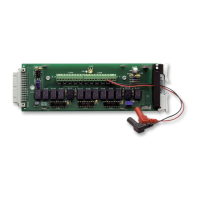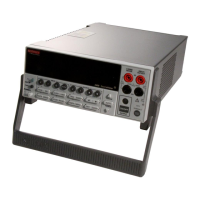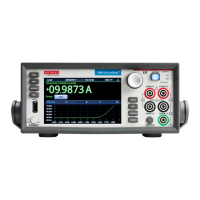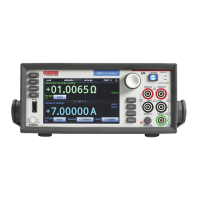C: Status model Model 2450 Interactive SourceMeter® Instrument
C-12 2450-901-01 Rev. B/September 2013
Service Request Enable Register
This register is programmed by the user and is used to enable or disable the setting of bit B6
(RQS/MSS) by the Status Summary Message bits (B0, B1, B2, B3, B4, B5, and B7) of the Status
Byte Register. As shown in the Status Byte Register topic, a logical AND operation is performed on
the summary bits (&) with the corresponding enable bits of the Service Request Enable Register.
When a logical AND operation is performed with a set summary bit (1) and with an enabled bit (1) of
the enable register, the logic “1” output is applied to the input of the logical OR gate and, therefore,
sets the MSS/RQS bit in the Status Byte Register.
The individual bits of the Service Request Enable Register can be set or cleared by using the *SRE
common command or status.request_enable. To read the Service Request Enable Register,
use the *SRE? query or print(status.request_enable). The Service Request Enable Register
clears when power is cycled or a parameter value of 0 is sent with a status request enable command
(for example, a *SRE 0 or status.request_enable = 0 is sent). You can program and read the
SRQ Enable Register using the following commands.
Description SCPI command TSP command
Read the Status Request Enable
Register
status.request_enable (on page 8-
160)
Enable bits in the Status Request
*SRE (on page B-8) status.request_enable (on page 8-
Queues
The instrument includes an Output Queue and an Error Queue. The Output Queue holds messages
from readings and responses. The Error Queue holds error messages from the event log. Both are
first-in, first-out (FIFO) registers.
Output Queue
The output queue holds response messages to query and print() commands.
When data is placed in the Output Queue, the Message Available (MAV) bit in the Status Byte
Register is set. The bit is cleared when the Output Queue is empty.
To clear data from the Output Queue, read the messages. To read a message from the Output
Queue, address the instrument to talk after the appropriate query is sent.
Error Queue
The Error Queue holds any errors that are posted in the event log. When an error occurs, it is posted
to the Error Queue, which sets the Error Available (EAV) bit in the Status Byte Register.
The instrument clears error messages from the event log when it retrieves the event log. When the
error messages are cleared from the event log, the EAV bit in the Status Byte Register is cleared.
You can clear the Error Queue by sending the common command *CLS or the TSP command
status.clear(). Note that status.clear() also clears all event registers.
For information regarding the event log, see Using the event log (on page 2-117
).
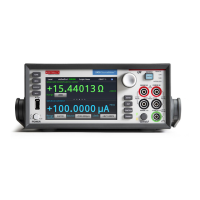
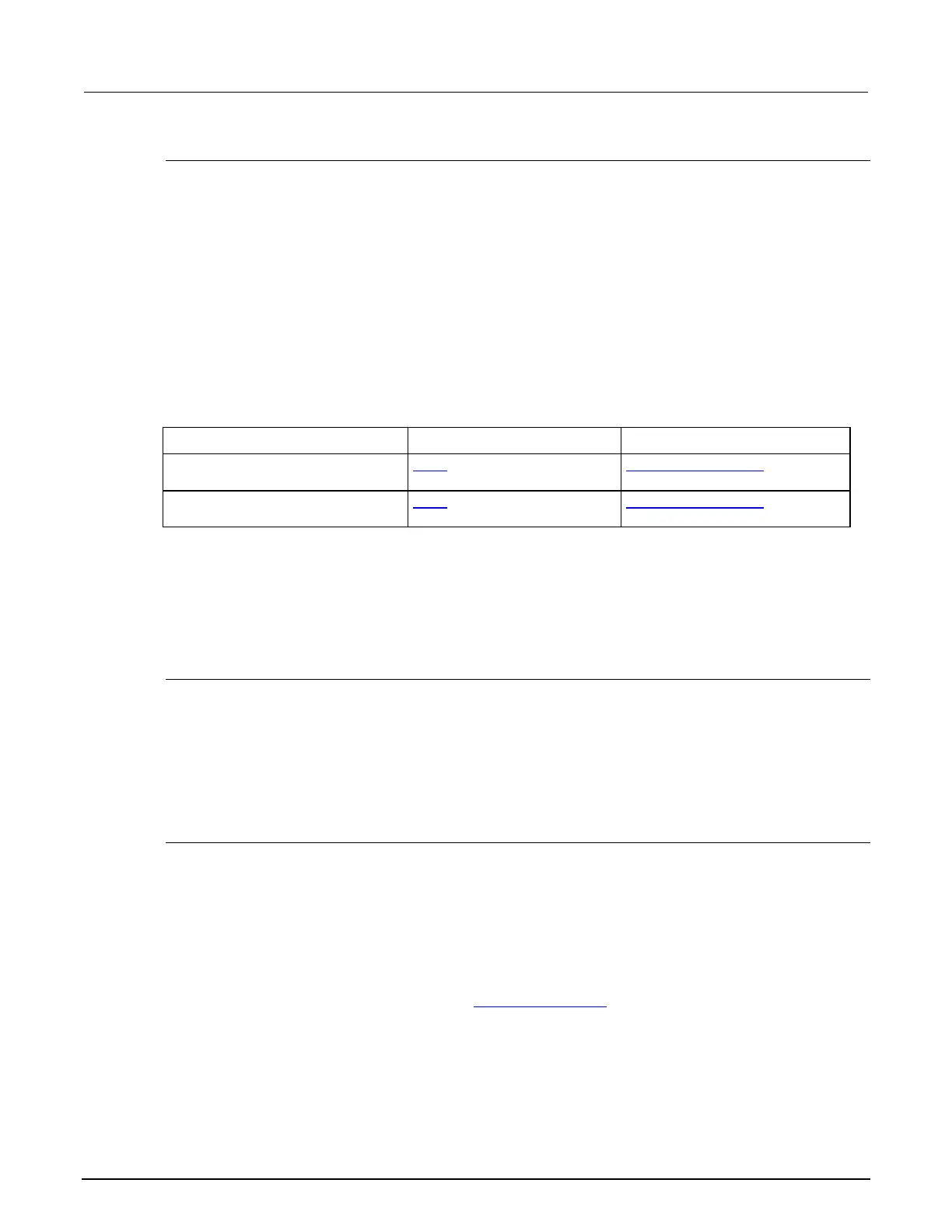